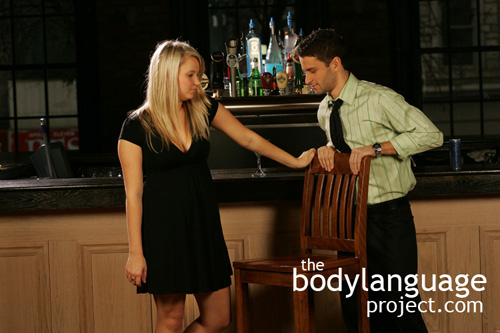How the environment is used by people can provide clues to their inner thoughts and emotions. For example, propping up against the wall indicates that the person is in need of support (or is really tired) which shows that they are incapable of comfort without the assistance the structure affords. Hiding a portion of the body behind a desk also indicates insecurity and we rarely invite commerce onto ourselves without placing a desk between us and our clients because we require the security it provides.
Imagine what it would be like to meeting face-to-face in an empty room. Desks and tables are more than just places to store notes! The “employee’s line” by which customers are forbidden to cross in retail stores has more to do with privacy, power and territoriality than security. What would happen if retailers could freely move into storage rooms and behind the counter, what about enter the kitchen at a dinner? The formalities of the establishment would drop significantly and it would be like being at home, free of boundaries.
Even podiums creates a much needed refuge, a place of security for presenters where the self conscious can be partially out of sight, or even dodge flying tomatoes! Only those that are supremely confident or experienced in front of others will ignore the podium and instead immerse themselves into the embrace of the crowd. Women who wish to quell an advance by men can steer them away by turning a cold shoulder, a barrier, or if possible, moving to the backside of a chair which can be used as a shield. When nervous around women, on the other hand, men can use bar tops to prop up against to protect them from rejection. As you see, objects are sometimes used as crutches and at the same time indicated to us as body language readers that a person is uncomfortable standing by themselves. In other words, it tells us that they are worried that they might suffer an emotional attack so they limit their exposure. People can use chairs, lean against a bar as discussed, a beam, a table, or might simply use objects like mugs or cups, or even pens and utensils which can figuratively represent make-shift weapons. Obviously pens would never be drawn, so to speak, as a weapon, but they still offer a psychologically comforting mechanism.



